#rambaud
Photo

OUVRAGE | Qu'il est dur d'aimer et d'être aimé en 1793, par Gerbert Rambaud ➽ https://bit.ly/Ouvrage-Familles-Revolution Comment les familles françaises ont vécu un quotidien profondément bouleversé par une Révolution faisant couler le sang ? Le temps de huit récits inspirés de destinées authentiques, Gerbert Rambaud se penche sur ces « petites histoires » qui parfois nous disent mieux l'Histoire que les grands jalons historiques
5 notes
·
View notes
Text


Major Regara / Son Of Sek
by Fred Rambaud
#imperial guard#chaos#cultists#warhammer#warhammer 40k#warhammer 40000#40k#fred rambaud#illustration#imperium
196 notes
·
View notes
Text

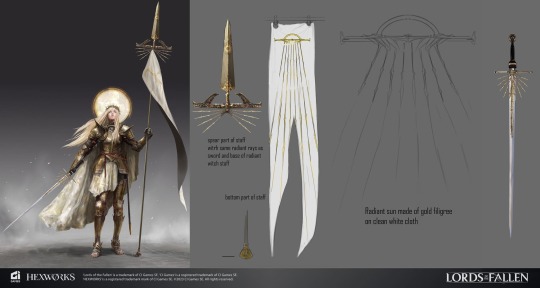
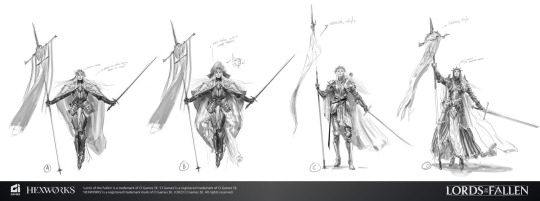

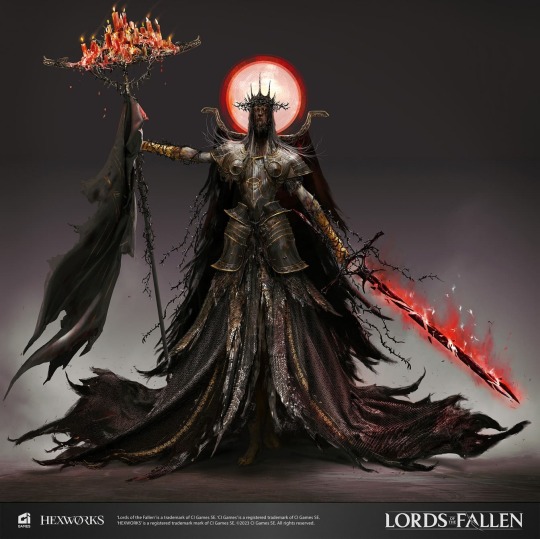




Lords of the Fallen by Fred Rambaud #1
#fred rambaud#lords of the fallen#hexworks#ci games#action games#adventure games#cocnept art#character design#artwork
80 notes
·
View notes
Text
I found a novel about young Napoleon's rise to power, and in the first few pages it's told me Robespierre had no lips and that he was losing sleep over the rumours about him and Eleonore Duplay being lovers, because she was so fucking ugly, he would never, how could people say that, how mean of them
#well thanks for nothing author#patrick rambaud: le chat botté#justice for them both#but mostly justice for Eleonore#I'm sure he found her lovely and gave her many platonic (or not) kisses with the lips he definitely had
54 notes
·
View notes
Text

By Fred Rambaud
#official concept art#Kassandra#A.C. Odyssey#Assassin's Creed Odyssey#Ancient Greek#Misthios#Mercenary#Videogames#concept artworks#Fred Rambaud#The Keeper#The West Wind#The eagle Bearer#Ikaros
32 notes
·
View notes
Photo

Adeptus Mechanicus by Fred Rambaud
77 notes
·
View notes
Text

Oracle - Fred Rambaud
3 notes
·
View notes
Text

47 notes
·
View notes
Photo

Lady Deathstrike by Fred Rambaud
31 notes
·
View notes
Text
Célestin "Ma Mère" (NOUVEAU CLIP)

élestin est de retour en cette rentrée avec la vidéo de Ma Mère, un superbe clip évoquant l'écologie sur un mode tendre et poétique, avec des images en animation faites par le studio Folimage. Coup de cœur chanson française du moment.
Moitié du duo Fills Monkey, Célestin alias Sébastien Rambaud, raconte ses histoires d’une plume malicieuse, qui virevolte entre ironie, lucidité, engagement et poésie.

Avec son nouvel extrait, Ma Mère, extrait de l'album Deuxième Acte, sorti il y a quelques mois de cela, le musicien parvient à parler d'écologie en échappant aux stéréotypes et en délivrant un message poignant et juste. Dans une chorégraphie effrénée, Célestin nous interpelle sur l’urgence de sauver sa mère yéti tandis que des silhouettes noires dansent, consomment, et la maltraitent sous le regard impuissant des animaux.
Célestin est en concert à Paris à La Petite Loge le 15/09 (complet) et le 04/10.
youtube
#célestin#sébastien rambaud#fills monkey#écologie#planète#musique#chanson#deuxième acte#folimage#concert#la petite loge#Youtube
0 notes
Text
L’écrivaine Christine Angot élue à l’académie Goncourt
La nouvelle élue, qui a reçu le prix Médicis, en 2021, pour Le Voyage dans l’est, remplace Patrick Rambaud, 76 ans. Victime d’inceste, elle en a fait sujet de plusieurs de ses romans.
#littérature#prix litteraire#récompenses#distinction#jury#Académique Goncourt#prix Goncourt#roman#Christine Angot#france#Patrick Rambaud
0 notes
Text



Character Designs by Concept Artist and Illustrator Fred Rambaud
190 notes
·
View notes
Photo

Nu kyr'adyc, shi taab'echaaj'la.
That's Mando'a for "Not gone, merely marching far away."
Text-added graphic origins unknown but base artwork without the text is by Fred Rambaud for the Star Wars Galaxies Trading Card Game – Champions of the Force card called "Mandalorian Helmet"
41 notes
·
View notes
Text





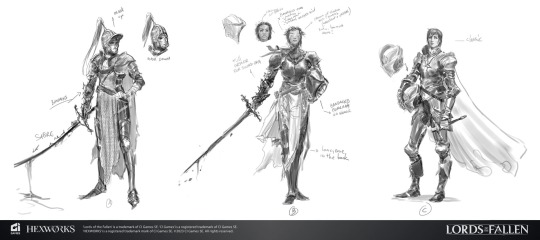


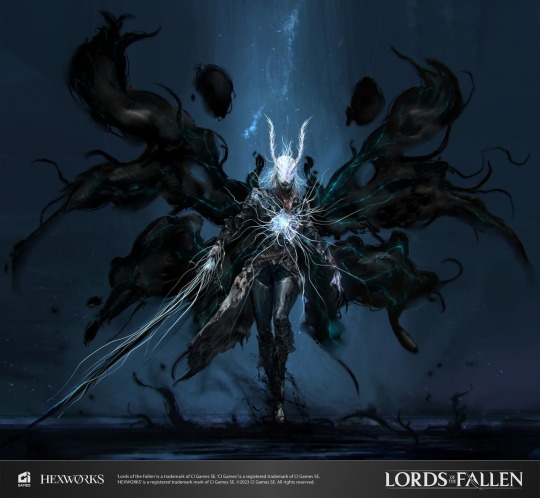
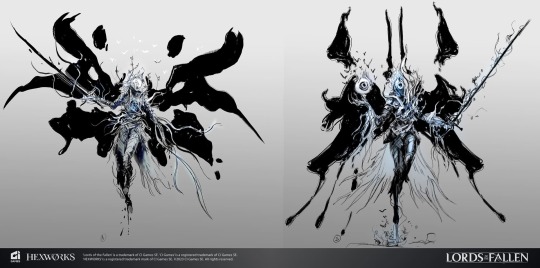
Lords of the Fallen by Fred Rambaud #2
#fred rambaud#lords of the fallen#hexworks#ci games#action games#fantasy games#adventure games#concept art#character design#artwork
60 notes
·
View notes
Text

Ah yes, yet another author obsessed with Robespierre being short-sighted in a pathologising way. "Ses yeux flous"...dear author, we short-sighted people don't have "blurry eyes"...it's our distant vision which is blurry, but people can't tell we're short-sighted by just looking at us, our eyes don't look different. Also, let's not even talk about "sa bouche sans lèvres/ his mouth without lips"...did you just meant "thin lips" but tried to be original about it, author?

"his sick eyes"...dear author, myopia is a disability, that's all, and a very common one
It's like *gasp* Robespierre was short-sighted like 40% of France population today and *bigger gasp* he wore glasses like 7 adults out of 10 in France do, now that our heath care system has made them accesible
And *giant gasp* he might have even worn tinted glasses to protect his clear eyes (which are more sensitive to light than darker eyes) like other people did in the 18C
Source: Le chat botté, by Patrick Rambaud (2006)
#robespierre's eyes#patrick rambaud: le chat botté#also weren't both louis and marie antoinette short-sighted yet it's barely ever mentionned??? or am I mistaken?
33 notes
·
View notes
Text

Appendix X: The Origin of the Guilds
The origin of the guilds has been the subject of many controversies. There is not the slightest doubt that craft-guilds, or “colleges” of artisans, existed in ancient Rome. It appears, indeed, from a passage in Plutarch that Numa legislated about them. “He divided the people,” we are told, “into trades... ordering them to have brotherhoods, festivals, and meetings, and indicating the worship they had to accomplish before the gods, according to the dignity of each trade.” It is almost certain, however, that it was not the Roman king who invented, or instituted, the trade-colleges — they had already existed in ancient Greece; in all probability, he simply submitted them to royal legislation, just as Philippe le Bel, fifteen centuries later, submitted the trades of France, much to their detriment, to royal supervision and legislation. One of the successors of Numa, Servius Tullius, also is said to have issued some legislation concerning the colleges.[319]
Consequently, it was quite natural that historians should ask themselves whether the guilds which took such a development in the twelfth, and even the tenth and the eleventh centuries, were not revivals of the old Roman “colleges” — the more so as the latter, as seen from the above quotation, quite corresponded to the mediæval guild.[320] It is known, indeed, that corporations of the Roman type existed in Southern Gaul down to the fifth century. Besides, an inscription found during some excavations in Paris shows that a corporation of Lutetia nautæ existed under Tiberius; and in the chart given to the Paris “water-merchants” in 1170, their rights are spoken of as existing ab antiquo [from ancient] (same author, p. 51). There would have been, therefore, nothing extraordinary, had corporations been maintained in early medieval France after the barbarian invasions.
However, even if as much must be granted, there is no reason to maintain that the Dutch corporations, the Norman guilds, the Russian artéls, the Georgian amkari, and so on, necessarily have had also a Roman, or even a Byzantine origin. Of course, the intercourse between the Normans and the capital of the East-Roman Empire was very active, and the Slavonians (as has been proved by Russian historians, and especially by Rambaud) took a lively part in that intercourse. So, the Normans and the Russians may have imported the Roman organization of trade-corporations into their respective lands. But when we see that the artél was the very essence of the everyday life of all the Russians, as early as the tenth century, and that this artél, although no sort of legislation has ever regulated its life till modern times, has the very same features as the Roman college and the Western guild, we are still more inclined to consider the eastern guild as having an even more ancient origin than the Roman college. Romans knew well, indeed, that their sodalitia and collegia were “what the Greeks called hetairiai” (Martin-Saint-Léon, p. 2), and from what we know of the history of the East, we may conclude, with little probability of being mistaken, that the great nations of the East, as well as Egypt, also have had the same guild organization. The essential features of this organization remain the same wherever we may find them. It is a union of men carrying on the same profession or trade. This union, like the primitive clan, has its own gods and its own worship, always containing some mysteries, specific to each separate union; it considers all its members as brothers and sisters — possibly (at its beginnings) with all the consequences which such a relationship implied in the gens, or, at least, with ceremonies that indicated or symbolized the clan relations between brother and sister; and finally, all the obligations of mutual support which existed in the clan, exist in this union; namely, the exclusion of the very possibility of a murder within the brotherhood, the clan responsibility before justice, and the obligation, in case of a minor dispute, of bringing the matter before the judges, or rather the arbiters, of the guild brotherhood. The guild — one may say — is thus modelled upon the clan.
Consequently, the same remarks which are made in the text concerning the origin of the village community, apply, I am inclined to think, equally to the guild, the artél, and the craft- or neighbour-brotherhood. When the bonds which formerly connected men in their clans were loosened in consequence of migrations, the appearance of the paternal family, and a growing diversity of occupations — a new territorial bond was worked out by mankind in the shape of the village community; and another bond — an occupation bond — was worked out in an imaginary brotherhood — the imaginary clan, which was represented: between two men, or a few men, by the “mixture-of-blood brotherhood” (the Slavonian pobratimstvo), and between a greater number of men of different origin, i.e. originated from different clans, inhabiting the same village or town (or even different villages or towns) — the phratry, the hetairiai, the amkari, the artél, the guild.[321]
As to the idea and the form of such an organization, its elements were already indicated from the savage period downwards. We know indeed that in the clans of all savages there are separate secret organizations of warriors, of witches, of young men, etc. — craft mysteries, in which knowledge concerning hunting or warfare is transmitted; in a word, “clubs,” as Miklukho-Maclay described them. These “mysteries” were, in all probability, the prototypes of the future guilds.[322]
With regard to the above-mentioned work by E. Martin-Saint-Léon, let me add that it contains very valuable information concerning the organization of the trades in Paris — as it appears from the Livre des métiers of Boileau — and a good summary of information relative to the Communes of different parts of France, with all bibliographical indications. It must, however, be remembered that Paris was a “Royal city” (like Moscow, or Westminster), and that consequently the free medieval-city institutions have never attained there the development which they have attained in free cities. Far from representing “the picture of a typical corporation,” the corporations of Paris, “born and developed under the direct tutorship of royalty,” for this very same cause (which the author considers a cause of superiority, while it was a cause of inferiority — he himself fully shows in different parts of his work how the interference of the imperial power in Rome, and of the royal power in France, destroyed and paralyzed the life of the craft-guilds) could never attain the wonderful growth and influence upon all the life of the city which they did attain in North-Eastern France, at Lyons, Montpellier, Nimes, etc., or in the free cities of Italy, Flanders, Germany, and so on.
#organization#revolution#mutual aid#anarchism#daily posts#communism#anti capitalist#anti capitalism#late stage capitalism#anarchy#anarchists#libraries#leftism#social issues#economy#economics#climate change#anarchy works#environmentalism#environment#solarpunk#anti colonialism#a factor of evolution#petr kropotkin
16 notes
·
View notes